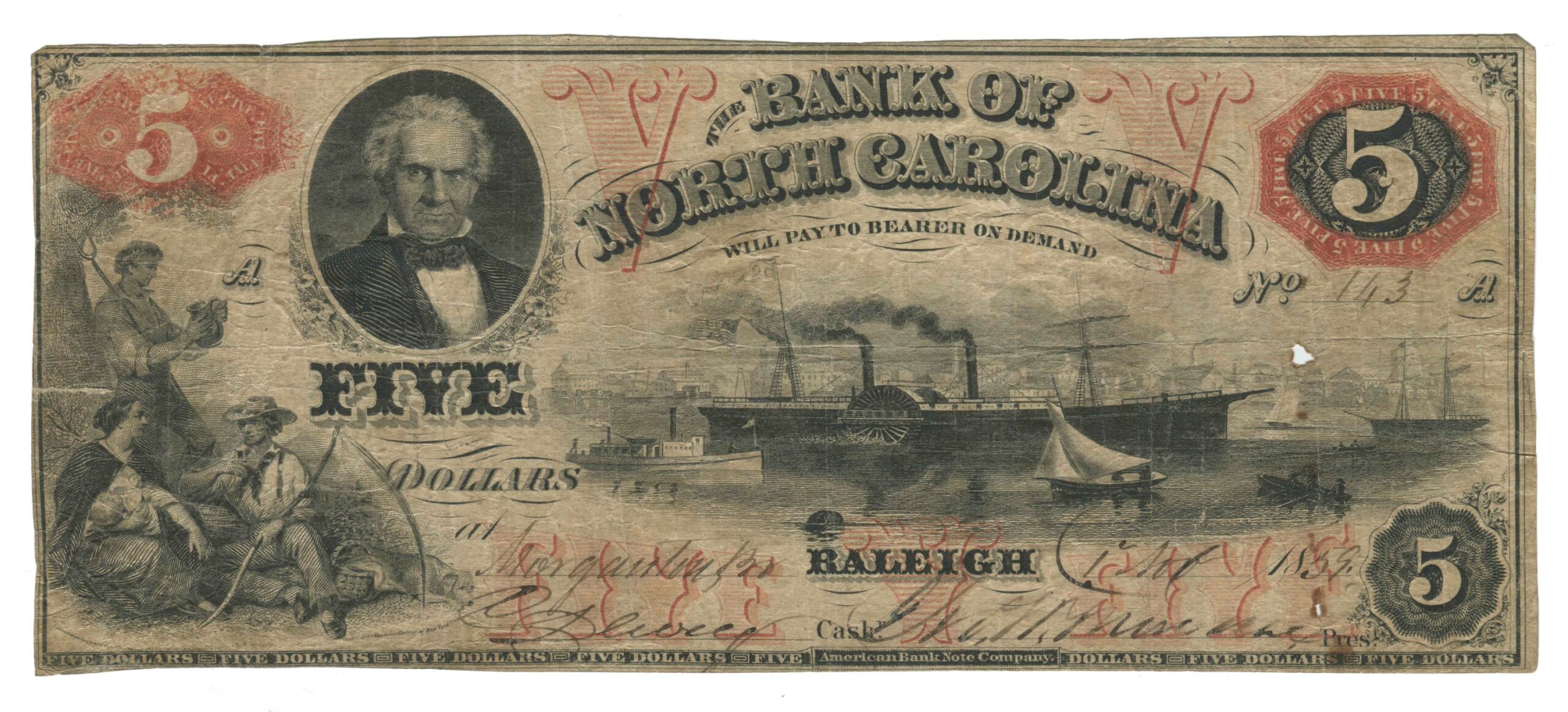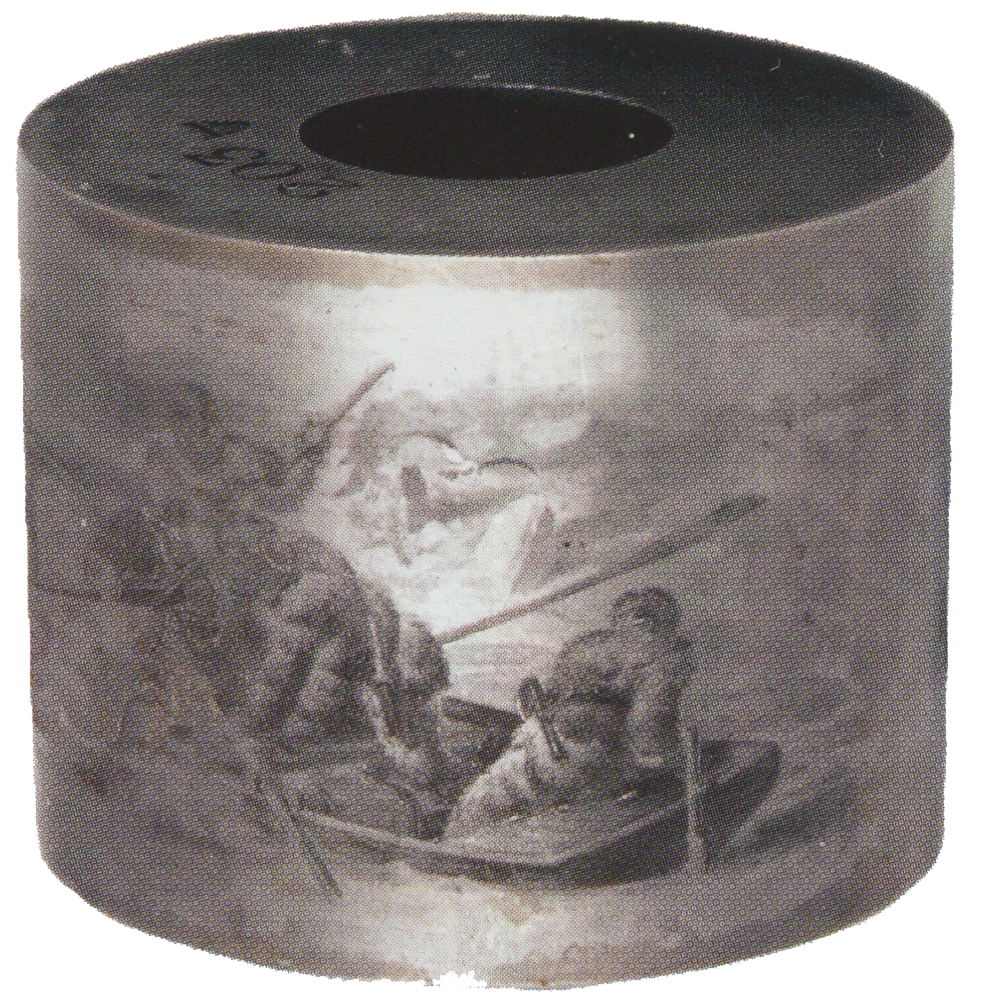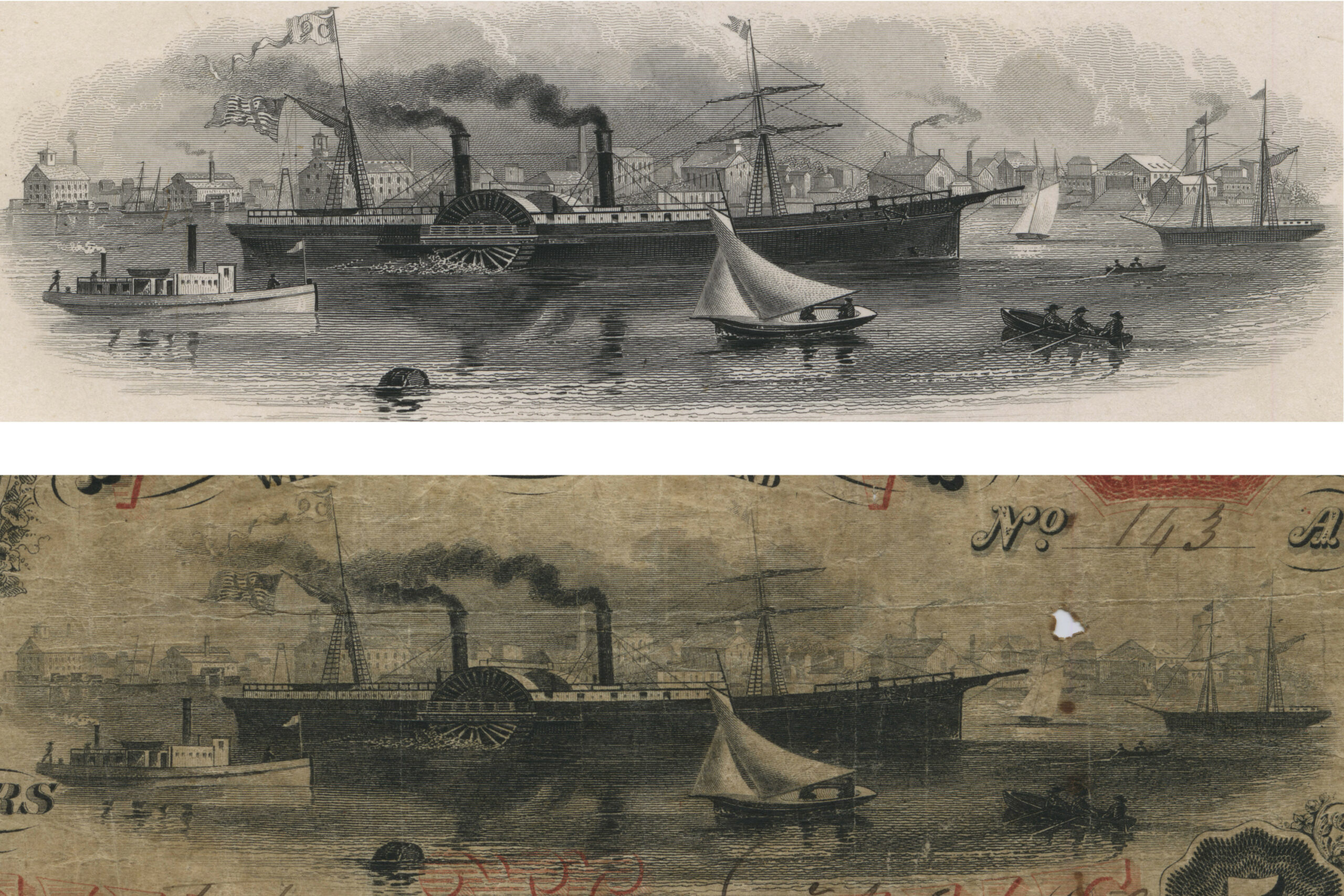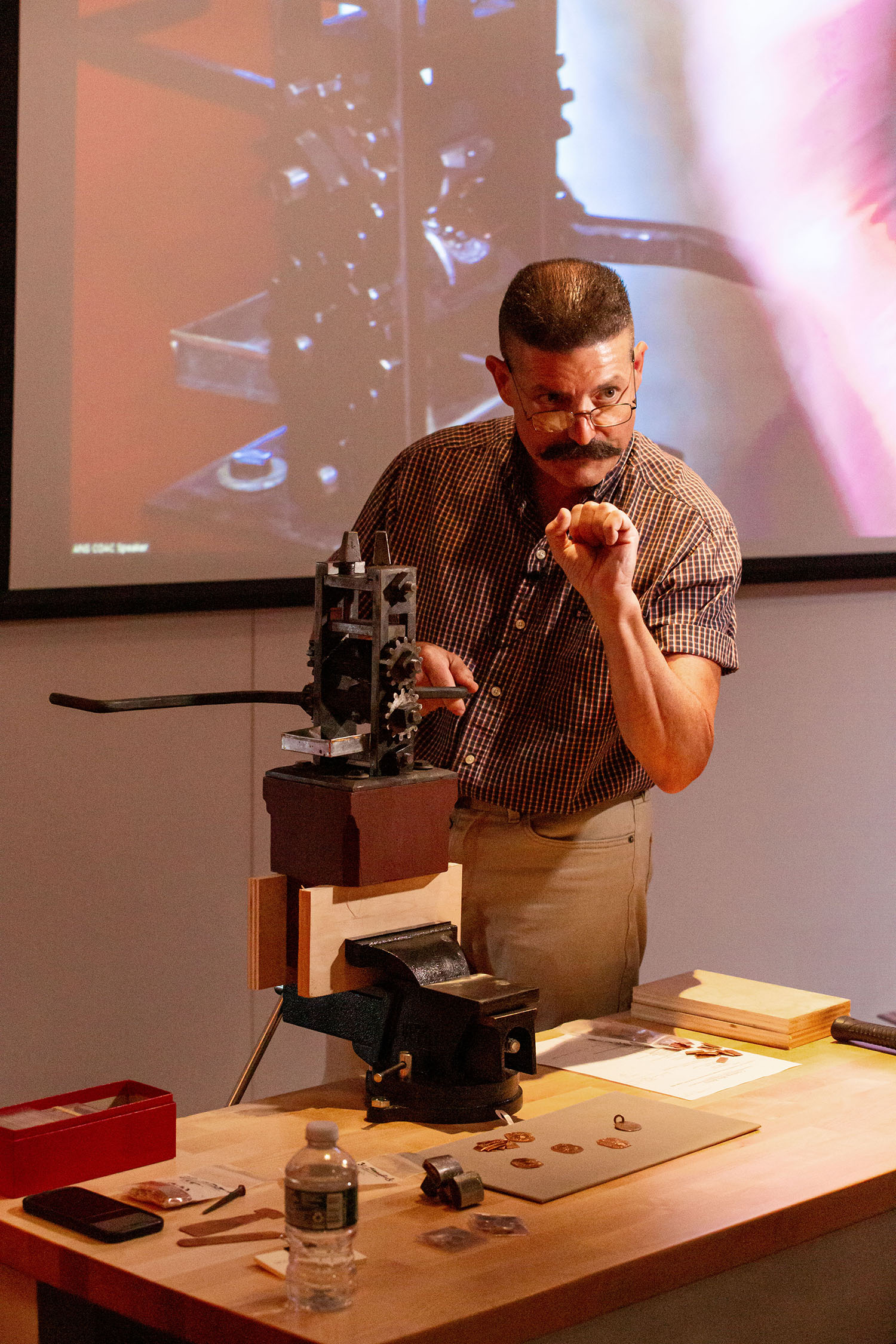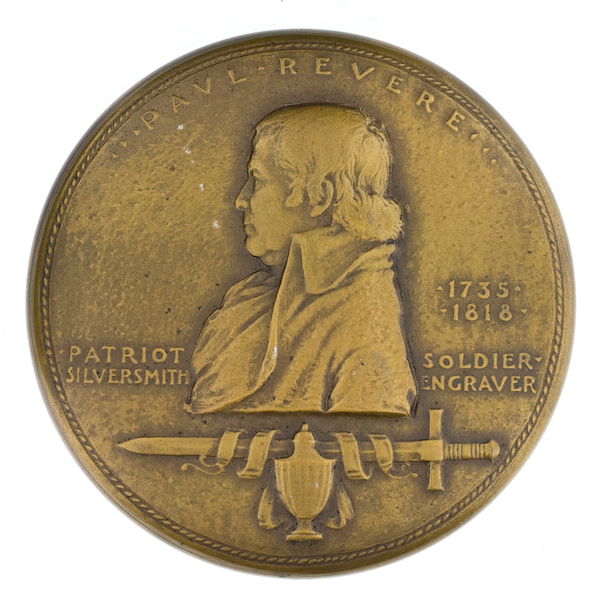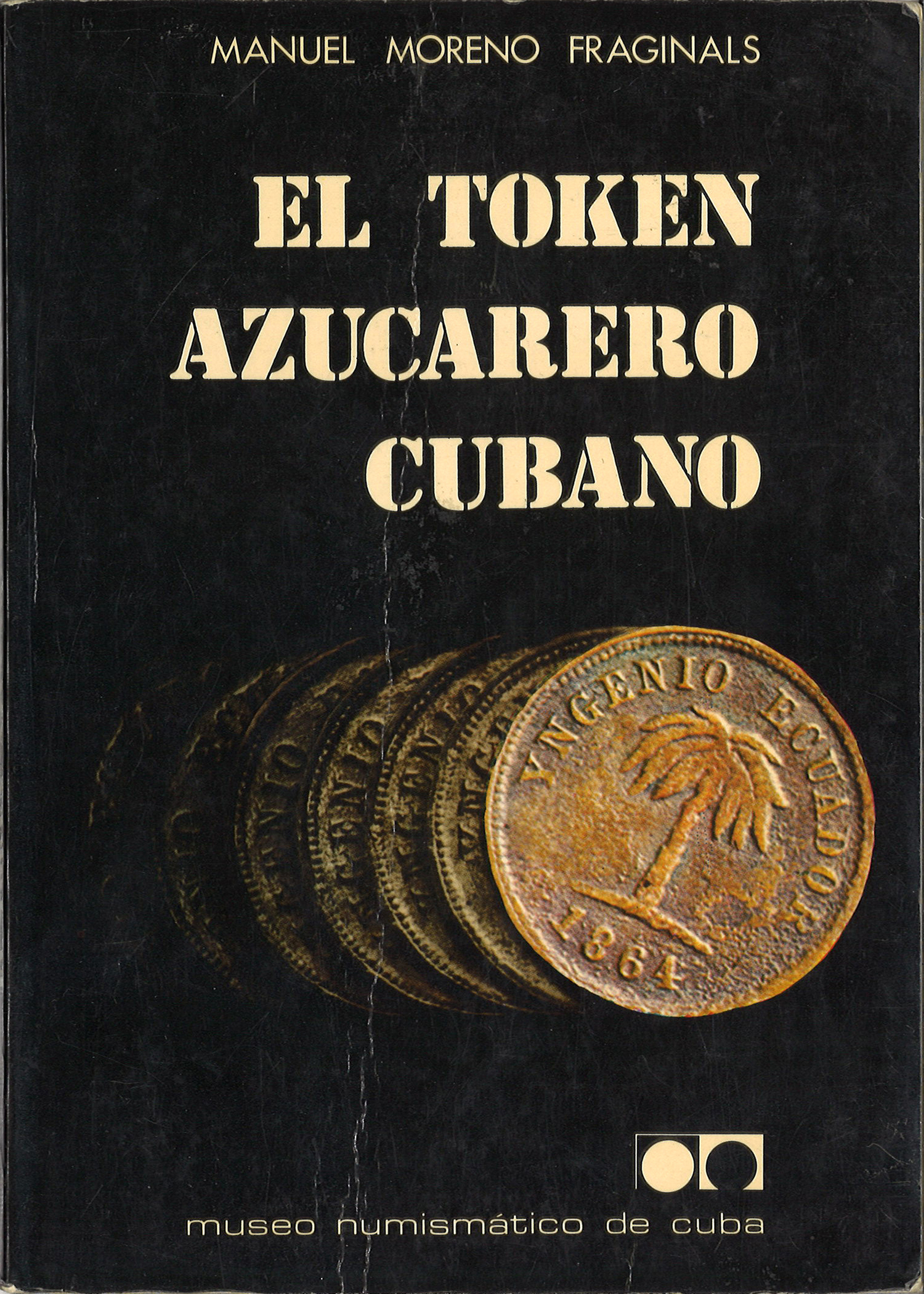Sidewheel Steamer Proof Vignette
Scattered among the American Numismatic Society’s paper money collection are vignette proofs, which are small engravings mounted on card stock by printing firms to model individual design elements for customers. The vignette pictured below is a particularly striking image of sidewheel steamer amidst river traffic from the American Bank Note Company (click to enlarge).
Although this engraving, like most nineteenth-century bank note work, was not signed, the artist was extremely skilled and created a range of tones by varying the spacing, size, and depth of the lines and dots. This detail of the sailboat in the foreground shows just how precise and delicate the line work needed to be to create a strong overall impression.
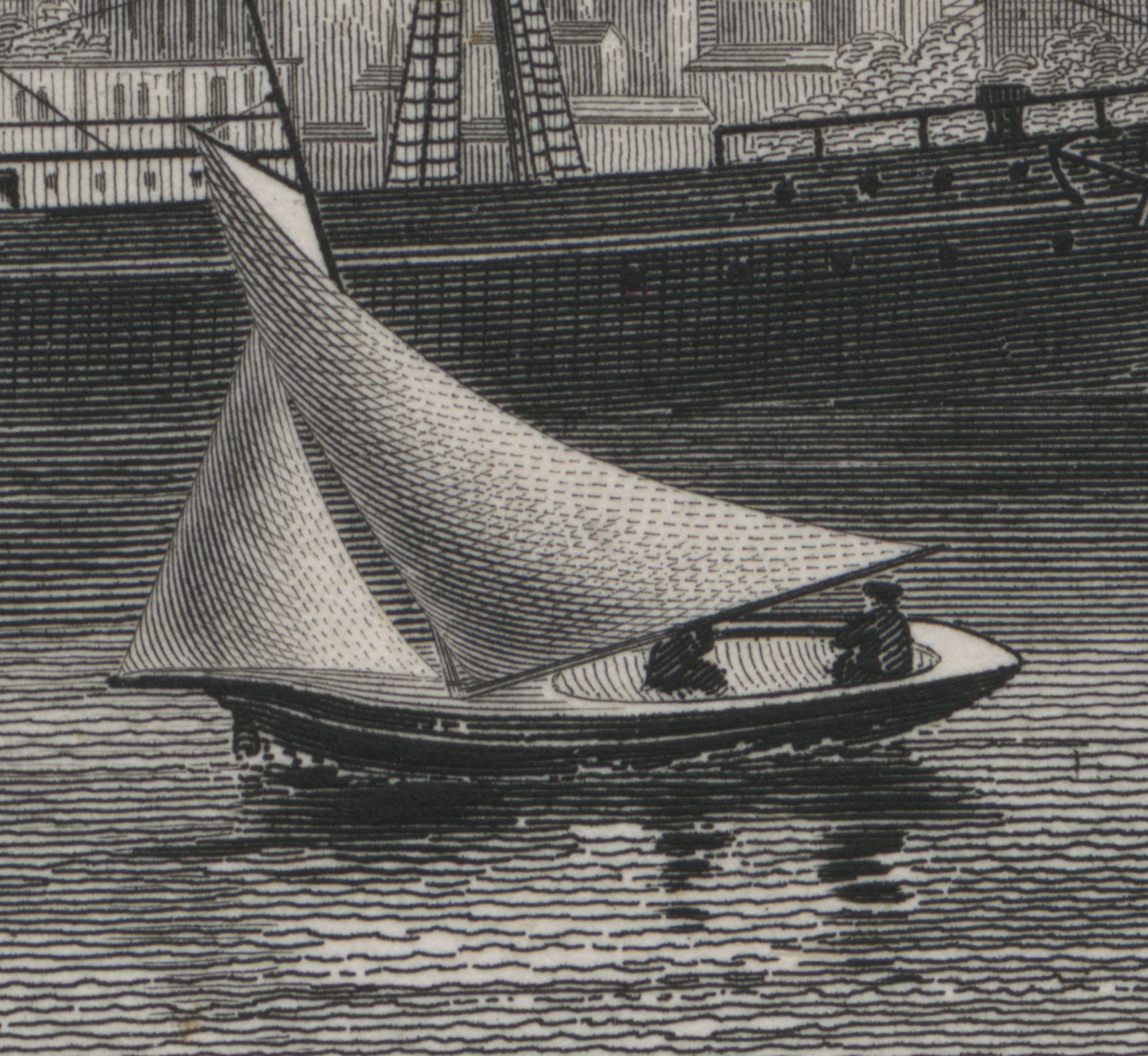
In industry terms, ‘bank-note engraving’ referred to two different methods of producing vignettes. Line engraving or ‘cutting’ involved using a graver to cut dots and lines directly onto a metal plate, which in practice was usually reserved for executing human figures and portraits. Etchings were made by covering the plate with a soft waxy ground and then sketching a design on to the plate using a sharp point, removing the wax where the artist wants lines to appear. The plate was then bathed in acid, which bites into the metal where it has been exposed, leaving lines and dots sunk into the plate. The scene above was created by etching, and the resulting line work for the water is particularly impressive as the reflections of the assorted boats create a very nice effect. The proof engraving would have been produced from a vignette die held by the American Bank Note Company, though it might originally have been cut earlier by one of the antecedent firms that amalgamated into that esteemed concern in 1858 (It was, see update below). Vignettes were often used by a variety of clients, but the only bank note upon which this particular one seems to appear in the ANS collection is on an 1859 five-dollar note issued by the Morganton branch of the Bank of North Carolina (Haxby NC-55 | Pennell P-990).
While the Bank of North Carolina might have commissioned the vignette for their notes, the expense of producing an original engraving meant that it was more likely a stock image selected by the bank. Customers would simply look through specimen books or review proof vignettes like the one above and then pick and choose images and security features. After the various design elements were decided upon, a transfer roll was used to move the design from the vignette die (a hardened steel plate with the master engraving) onto the printing plate. First, a soft steel roller was impressed over the face of the die to ‘pick up’ the image in relief. See, for example, this transfer roll from Stack’s catalog for the J. A. Sherman Collection (2007), which holds two vignettes, one of which is of the famous polar bear scene. After the transfer rolls were tempered, they were rolled onto the face of a soft steel or copper plate, incusing the vignette onto the plate so that the notes were printed intaglio. The vignettes, counters, and lettering were added by successive applications of transfer rolls to create the overall design, after which the bank note plate was hardened and prepared for printing. The red overprinting on the Bank of North Carolina note was a security feature that would have required a second plate inked with red.
A close-up comparison between the proof engraving and the North Carolina bank note shows how some detail was lost during the transfer and printing process, and then subsequently in circulation.
Still, the combination of artistry and technology that went into producing vignettes for nineteenth-century bank notes was impressive. For more information on this subject, see Mark Tomasko’s The Feel of Steel: The Art and History of Bank-Note Engraving in the United States (2012).
One final note: the American Numismatic Society does not presently have a vignette die or a transfer roll in its collection, though we do obviously have proof vignettes and printing plates. It would be great to get some dies in order to be able to demonstrate in full how the bank note production process worked. If a generous reader has something like this to spare, please consider donating to the ANS. Thanks!
Update: Mark Tomasko writes to let us know that this maritime vignette also appeared on a $5 note on the City Bank of New Haven. The imprint for that note is Toppan, Carpenter, Casilear & Co., which dates its creation to 1850-1855, prior the amalgamation of that firm into the American Bank Note Company.



